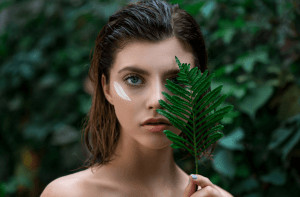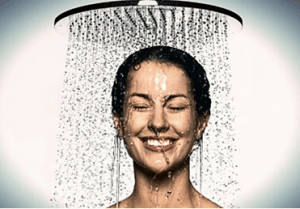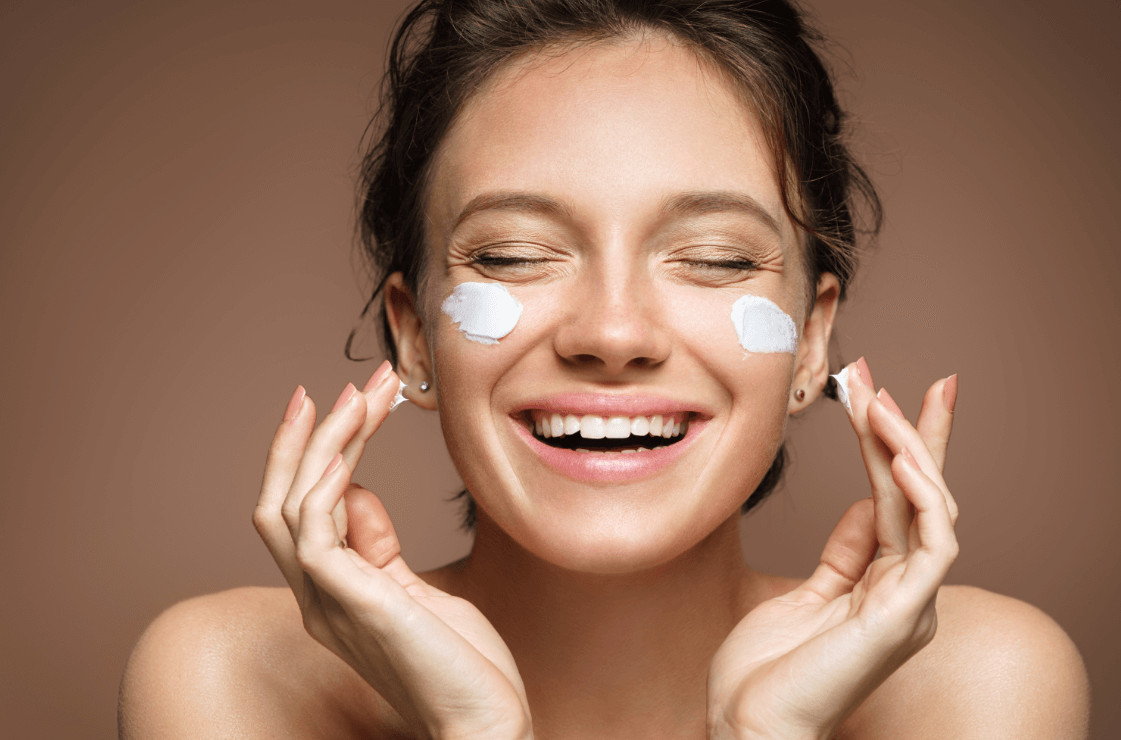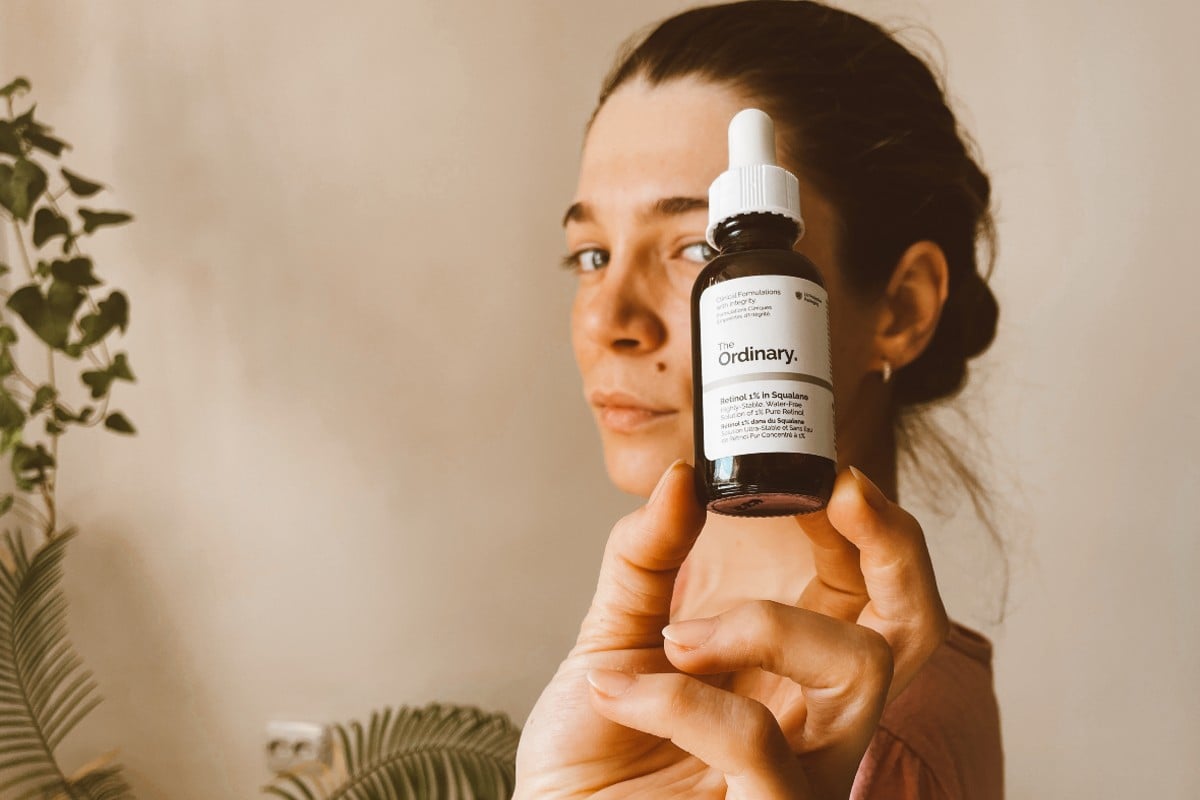Table of Contents
Have you heard of skin cycling? It’s a revolutionary new anti-aging technique developed by dermatologists, which has helped countless patients who are struggling with aging symptoms and bad skin. If you’ve heard of it, you may have wondered how it works and how to use it?
Skin cycling is a practice that has been around for some time. However it appears that the skin care practice has recently gained more attention online. If you’ve been scrolling through TikTok lately you’ll know exactly what we’re talking about. The hashtag “#skincycling” has now received an impressive 3.5 billion views on TikTok! This now creates the question, is it worth jumping on the bandwagon? Also, why is this routine a thing, and how does it work exactly?
What Is Skin Cycling?

What is skin cycling?
Skin cycling is a skin care term coined by Dr. Whitney Bowe. The good doctor created this technique to promote youthful looking skin, by using specialized products that not only hydrate and nourish the skin but also exfoliate and smoothen it. “I find that one of the top mistakes people make when it comes to their skin care is that they don’t build in nights for their skin barrier to recover”, says Dr Bowe. She explains that this was her inspiration for developing the technique. “Rather than adding more products on top of one another, it encourages you to use products in a strategic way to compliment one another”, she further explains.
Skin cycling arose from people who were over-exfoliating, and as a result finding that their skin care products were making their skin more sensitive and dry. It’s a fairly simple, 4-day routine that uses active ingredients on night’s 1 and 2. It then allows your skin to have a break on nights 3 and 4. It provides a valuable framework that is easy to follow and minimizes the need for sporadic skin care. At times, it may be difficult to read your skin and know when to use the right product.
Skin care routines rely on consistency in order for them to be effective, and this is why skin cycling has become so popular. It gives people a formulated routine to follow, and a way to gauge results.
The Science Behind Skin Cycling

The science behind skin cycling.
Unfortunately, there is not much scientific evidence available at this point to back up skin cycling. However, at its core, skin cycling is about removing dead skin cells and using a retinoid to increase the production of collagen. Collagen’s main function in skin cells is to provide strength and support throughout your body. When attempting skin cycling, instead of exfoliating and using retinol over and over again, it allows a break in between treatments. This helps to avoid your skin drying out, and protects the skin’s natural barrier.
There is a large group of consumers who tend to overuse skin care products. This group of consumers is likely going to benefit the most. Instead of using an exfoliant everyday on top of a retinoid, skin cycling introduces a 2-day recovery period. During this period no skin care products are used other than a moisturizer. This benefits people who have irritated skin from overusing skin care products, because they are now respecing their skin barrier and allowing it time to recover after exfoliating.
The Different Stages of Skin Cycling

The different stages of skin cycling.
If your morning routine is fairly simple – think cleanser, moisturizer, sunscreen – it shouldn’t be changed or tampered with, as skin cycling focuses specifically on your evening skin care. It’s a fairly simple process that should be repeated every 4 days.
Night 1 – Exfoliate
By following the routine outlined by Dr Bowe, you will end up exfoliating just under twice a week which aligns with the recommended amount by dermatologists. On the first night you’ll cleanse your skin with an exfoliant, followed by a moisturizer. It’s recommended by dermatologists to use alpha hydroxy acids (AHAs) such as glycolic acid or lactic acid. When using physical exfoliants, make sure they are not too harsh for your skin type. Using a physical exfoliant that is too rough for your skin may lead to micro-tearing. This is when tiny cuts in the skin occur from physical damage.
Night 2 – Retinoid
On night 2 you will apply a retinoid and follow it up with a moisturizer. Retinoids have a wide variety of benefits associated with skin care. From fighting acne to dealing with fine lines and dark spots on the skin. If you’ve never used a retinoid before, you should consider applying a layer of moisturizer on your skin before applying the active retinoid. This can help reduce the side effects of retinoids which sometimes cause dry, irritated and flaky skin.
Night 3 And 4 – Recovery and Moisture

Moisturization is a key part of the skin cycling process.
These are the nights that you allow your skin to take a breather. You should apply a moisturizer that contains skin-barrier repairing ingredients such as ceramides, peptides, hyaluronic acid and glycerin. These ingredients act by reducing water loss and keeping the skin hydrated. It’s very important that you don’t skip this step, as the rest period is an important stage of the routine. The focus in this final stage is solely on hydration and rest.
Which Products To Use In The Different Stages of Skin Cycling
1. Exfoliant For Skin Cycling

Using exfoliants in skin cycling.
When it comes to choosing the right exfoliant for your skin it’s not always such a simple choice. Many people may be nervous about using skin care products that contain harsh chemicals. The most important thing when choosing an exfoliant is to find a product that is suited to your unique skin type. If you already have sensitive skin you should consider using products that contain fruit enzymes as ingredients. Papain and Bromelain are great natural ingredients that are both gentle and effective. Papain is derived from papaya, whilst Bromelain is created from pineapple.
2. Retinoid For Skin Cycling
In theory all retinoids are considered as “natural” because they are derived from Vitamin A. However, there are also alternatives available to the standard Vitamin A retinoids. Some of these natural alternatives are Avocado oil, Rosehip oil, Apricot oil and Carrot Seed oil. They act in the same way as a retinoid derived from Vitamin A would work, but in general they are much gentler on the skin. They work by moisturizing the skin to make it appear plump and hydrated. Additionally, they aid in smoothing the appearance of fine lines and wrinkles. Additionally, retinoids speed up cell turnover and prevent pores from clogging.
3. Moisturizers For Skin Cycling

Moisturizers and skin cycling.
In the final stages you should be focusing on rest, recovery and moisturization. You should look for products that contain peptides, ceramides, allantoin and colloidal oatmeal which boast an array of fantastic nourishing properties for your skin. You should also be applying sunscreen everyday if you are using the skin cycling method. This is because retinoids and exfoliants increase the skin’s susceptibility to UV damage.
FAQs About Skin Cycling
Who Shouldn’t Use The Skin Cycling Routine?
If your skin is prone to acne then this may not be the best routine for you to follow. People who are prone to acne may need to use retinoids more frequently than the skin cycling routine allows, in order for them to get the best results. Additionally, those with very sensitive skin should be wary of using chemical exfoliants more than once a week, as it may be too harsh for their skin.
Who Benefits From The Skin Cycling Routine?

Who benefits from skin cycling?
People who are going to benefit the most from skin cycling are the ones who have been overusing their skin care products. Incorporating a break into their routine will allow their skin to recover and rejuvenate in between exfoliating and using a retinoid. This method is also great for people who are beginners and looking for a reliable routine to help them start their skin care journey.
Is Skin Cycling A New Technique?

Is skin cycling a new technique?
Despite its recent popularity on social media platforms, skin cycling has actually been a trusted and recognized method amongst dermatologists and estheticians for many years. While the term “skin cycling” may be new, the practice of skin cycling is certainly not.
Conclusion
Whether you’re a skin care newbie or a self-proclaimed veteran, skin cycling is definitely something worth looking into. There are undeniable benefits associated with allowing your skin to have a rest and recovery period. The most important thing is to figure out a skin cycling routine that works for you as an individual, and this includes using the appropriate products for your skin type.







